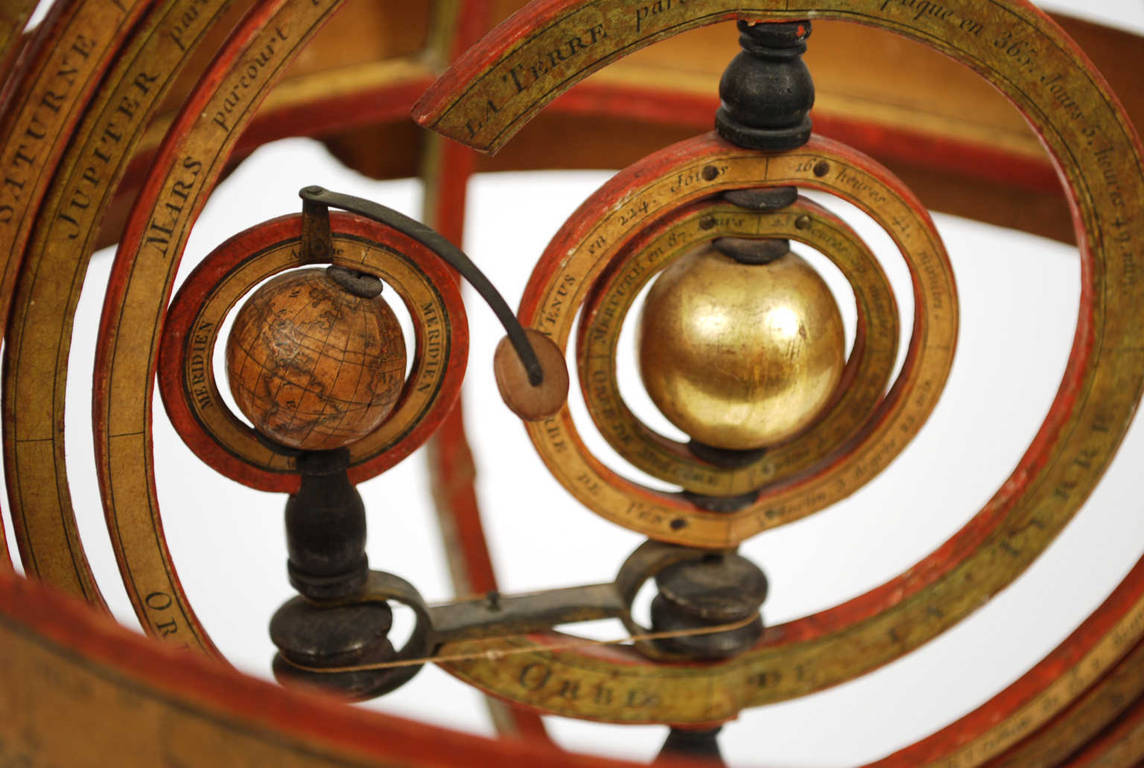1764083886Code 8339 Terrestrial GlobeGerman-language table globe, created by the Austro-Hungarian geographer and cartographer Jan Felkl and Professor Otto Delitsch in the second half of the 19th century. In addition to the territorial map, it also shows ocean currents. The base is made of turned and ebonized wood, complete with an engraved brass meridian circle. The sphere is made of papier-mâché and plaster, covered with spindles and caps obtained by lithographic printing.
Good condition, signs of wear and a slight crack at the equator over the Pacific Ocean.
Dimensions: 15 x 35 cm – 5.9 x 13.7 in
Jan Felkl (1817–1887) was a pioneer in globe production. Born in Bohemia, he opened his own workshop in Prague in the mid-19th century. In 1870, he moved the factory from Prague to Roztoky (Roziok) near Prague, establishing a business that employed craftsmen, lithographers, geographers, and engravers. One of the most well-known cartographers with whom Felkl collaborated was Professor Otto Delitsch of Leipzig, whose signature appears on the globe as the map's author. Delitsch helped develop a system of “toning” altitude, emphasizing mountains with shades of brown, a technique that became distinctive on some Felkl globes.
The Felkl & Sohn company gained international fame in the second half of the 19th century, producing globes in 17 languages and introducing important innovations, obtaining patents for globes that opened to form two hemispheres and for globes containing a celestial globe inside. After Jan Felkl's death in 1887, the business was continued by his sons. The factory continued producing globes into the early 20th century, but its fortunes began to decline after the First World War, with the disappearance of the Austro-Hungarian market and the emergence of new competitors. After further expansion in the 1920s, including the production of illuminated globes, difficulties mounted: inheritance conflicts, the Second World War, and the communist regime ultimately led to the company's closure in 1952.
The first globes date back to the early 16th century. Born from the impetus of great geographical explorations, they were immediately used for educational purposes in princely courts, monasteries, and colleges. In the 18th century, thanks to the work of Louis XIV's official geographer, both the celestial globe—which represents the concave surface of the sky with its constellations—and the terrestrial globe, which instead shows the Earth's surface with seas, islands, rivers, and cities, became widespread.
The production techniques involved creating two papier-mâché hemispheres, pressed and molded onto or inside a hemispherical mold, left to dry, and internally reinforced with a wooden board. The hemispheres were then glued together and covered with a thin layer of plaster, onto which the globe's time zones were applied: areas between two meridians, usually twelve, each covering 30 degrees of longitude. The time zones were made of paper printed by engraving on a copper plate, then colored.
In the 19th century, with the expansion of trade, the greater circulation of information, and the introduction of compulsory education, the desire to explore distant lands grew. The old method of globe construction quickly became inadequate: time zones printed from engraved plates were no longer sufficient, and the only effective solution became lithography, which allowed for the rapid printing and updating of maps destined to become obsolete due to the constant advance of geographical discoveries.




























